Subscribe to the Newsletter
If you are interested in understanding how Traditional Chinese Medicine can improve your life sign up to my newsletter for the latest updates.

Which Qi Stagnation foods are good and which are not?
In other words, if you have Qi Stagnation, how should you change your diet and what should you avoid? And why?
Each of us develops not just some of the main symptoms of Qi stagnation, but our own particular variety of them.
For example, if you’re a woman, perhaps you notice the symptoms particularly badly just before your menses, when stagnant qi causes more swelling and sensations of distension, but in addition, it exacerbates your back pain. Around 4pm you also feel very tired. For you, the qi stagnation is putting an extra strain on your Kidney qi which is why you get the back pain and 4pm droop.
For me? Well, first I’m male, so no menses. But along with some bowel pattern changes I get a slightly itchy skin on the sides of my chest and keep needing to yawn. In my case, qi stagnation is picking up on my history of chest and respiratory complaints – weak Lung qi.
Someone else with Stomach Qi deficiency might lose their appetite or even feel nauseous.
Everyone has a weak area, something that lets them down under stress. You might not know what it is but sooner or later, it will keep repeating – probably more often as you grow older.
The more carefully you behave, the less of a problem it will be. But still, potentially it’s always in the background. Unless of course, you’ve taken action to minimise it, such as with appropriate treatment.
You might not like some of the Qi stagnation foods listed, or your reaction might be unusual! You might be the one in 10 million people who, after eating a given food, goes green, sprouts leaves and ends up looking like a tree.

Statistically speaking, they tell me there’s always one. (!)
So … the point is, the foods listed below may or may not suit you. If some don’t, try others!
Qi is a manifestation of Yang energy. If you know anything about balancing yin and yang, you’ll realise that yang typically takes form as movement and heat: together these form pressure. They overcome yin forms, such as coolness, resilience and resources – and Blood.
So if you think about what happens to you as Qi stagnates, you get one or more of the following symptoms:
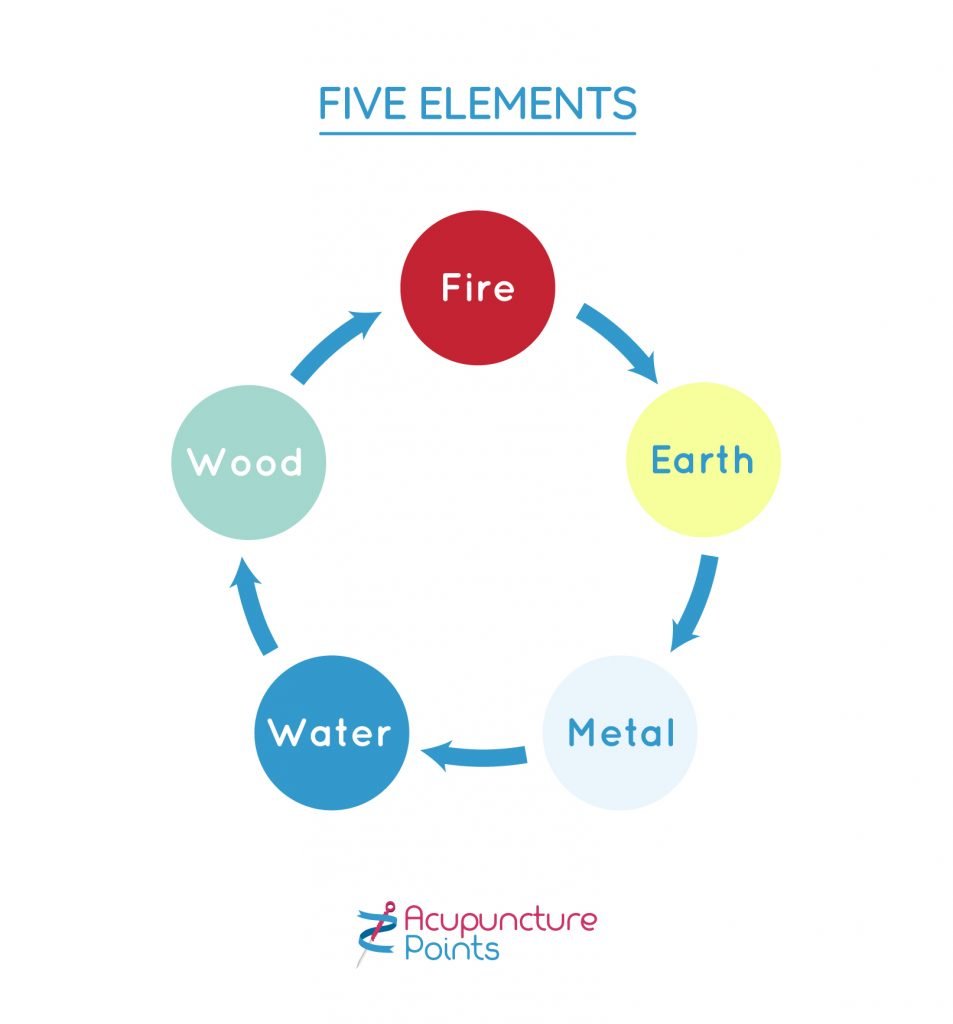
There are also some foods that seem to benefit the Liver and Gallbladder directly, easing their excesses and regulating how they work.
And some foods that almost certainly make Qi stagnation worse. I list them below the main table.
In the table below listing foods for Qi stagnation, bear in mind that


| Food | Reduces Heat | Dissipates Excess Yang | Steadies Earth & Supports Blood | Energises Metal | Harmonise Liver |
| Asparagus | |||||
| Barley | Barley | ||||
| Basil | Basil | ||||
| Basil | Basil | ||||
| Bayleaf | Bayleaf | ||||
| Bean curd | Bean curd | ||||
| Beef | Beef | ||||
| Beets | Beets | ||||
| Bitter gourd | Bitter gourd | ||||
| Black Pepper | Black pepper | ||||
| Black sesame seed | Black sesame seed | ||||
| Broccoli | Broccoli | ||||
| Brussels sprouts | Brussels sprouts | ||||
| Cabbage | Cabbage | ||||
| Caraway seed | Caraway seed | ||||
| Cardamom | Cardamom | ||||
| Cauliflower | Cauliflower | ||||
| Celery | Celery | ||||
| Celery | Celery | ||||
| Chamomile flower | Chamomile flower | ||||
| Cherries | Cherries | ||||
| Chestnut | Chestnut | ||||
| Chicken | Chicken | ||||
| Chicory | Chicory | ||||
| Chinese dates | Chinese dates | ||||
| Chives | Chives | ||||
| Cider vinegar | Cider vinegar | Cider vinegar | |||
| Cinnamon bark | Cinnamon bark | ||||
| Clove | Clove | ||||
| Corn silk | Corn silk | ||||
| Cucumber | Cucumber | ||||
| Cucumber | Cucumber | ||||
| Cumin | Cumin | ||||
| Dandelion root | Dandelion root | ||||
| Dill | Dill | ||||
| Eggplant | Eggplant | ||||
| Fennel | Fennel | ||||
| Fennel | Fennel | ||||
| Fig | Fig | ||||
| Ginger | Ginger | ||||
| Ginseng (American) | Ginseng (American) | ||||
| Grapefruit | Grapefruit | ||||
| Hawthorn fruit | Hawthorn fruit | ||||
| Honey | Honey | ||||
| Job’s tears | Job’s tears | ||||
| Kelp | Kelp | ||||
| Kohlrabi | Kohlrabi | ||||
| Leek | Leek | ||||
| Lemon Balm | Lemonn Balm | ||||
| Lemon Balm | Lemon Balm | ||||
| Lettuce | Lettuce | ||||
| Lime | Lime | ||||
| Longan | Longan | ||||
| Loquat | Loquat | ||||
| Lychee | Lychee | ||||
| Malt | Malt | ||||
| Maltose | Maltose | ||||
| Marjoram | Marjoram | ||||
| Milk (cow) | Milk (cow) | ||||
| Milk thistle seeds | Milk thistle seeds | ||||
| Millet | Millet | ||||
| Mint | Mint | ||||
| Mung Beans | Mung Beans | ||||
| Mung Beans | Mung Beans | ||||
| Mushrooms | Mushrooms | ||||
| Muskmelon | Muskmelon | ||||
| Mustard Greens | Mustard Greens | Celery | |||
| Olive | Olive | ||||
| Onion | Onion | ||||
| Peach | Peach | ||||
| Peanuts | Peanuts | ||||
| Pear | Pear | ||||
| Peppermint | Peppermint | ||||
| Pinenuts | Pinenuts | ||||
| Pork | Pork | ||||
| Quinoa | Quinoa | ||||
| Radish | Radish | ||||
| Radish leaves | Radish leaves | ||||
| Rhubarb root | Rhubarb root | ||||
| Romaine lettuce | Romaine lettuce | ||||
| Rosemary | Rosemary | ||||
| Rye | Rye | ||||
| Seaweed | Seaweed | ||||
| Shiitake mushroom | Shiitake mushroom | ||||
| Sour plum | Sour plum | ||||
| Squash | Squash | ||||
| Star anise | Star anise | ||||
| Strawberry | Strawberry | ||||
| String beans | String beans | ||||
| Sweet rice | Sweet rice | ||||
| Tangerine | Tangerine | ||||
| Taro root | Taro root | ||||
| Tofu | Tofu | ||||
| Turmeric | Turmeric | ||||
| Turnips | Turnips | ||||
| Water chestnut | Water chestnut | ||||
| Watercress | Watercress | Watercress | |||
| Watermelon | Watermelon | ||||
| Wine | Wine | ||||

Stay in Touch!
No spam, only notifications about new articles and updates.

Book a Video consultation if you want to know more about your symptoms
Just to recap! As mentioned above, ideally the foods you want to eat will:
Nobody will agree with all my following suggestions, of course, but to worsen your Qi stagnation, here’s a list.
Increase Heat and Yang with strong spices, chilli, pepper, horseradish etc. Initially these stimulate Lung qi, being pungent, but later they produce Heat, usually exacerbating Qi stagnation symptoms.
… with strong alcohol, spirits, schnapps, brandy, whisky etc or lots of red wine, sherry, port etc. In small quantities, alcohol eases qi stagnation, but in larger or stronger quantities, it causes work for your Liver, leading to Heat, worsening Qi stagnation.
We need the right oils in the right quantities. Too much of even the right oils and certainly too much of the wrong oils cause heating. We should avoid oils that are hydrogenated which are poisonous; those that are rancid or smell fishy; many man-made oils like margarine; those used in large quantities in baking, or which have been used many times; also too many nuts, especially fatty nuts like macadamia, good those these are in small quantities. There’s a wonderful book on fats, explaining lots you never knew (well, speaking for myself!): Fats that Heal, Fats that Kill by Udo Erasmus.
Many prescribed medications upset our Liver. So also do many self-prescribed medications, like paracetamol. I would say that many medications used to suppress symptoms often have the opposite effect. Read two pages on this: the first is our page on Suppression. The second is Primary and Secondary actions of foods, herbs and drugs.
Think what they do! If they make you fidgety, hyper, ‘wired’, they increase Yang.

Not good for Qi stagnation, at least not the next day!
If social drugs make you feel all powerful, flowing, magnificent, they are temporarily sweeping aside the resistance your body’s qi stagnation has created – their primary effect (you DID read that link above didn’t you?!). When the secondary effect kicks in, you’ll be dying for more of the drug! And most likely, not feeling at all well: the secondary effect!
Our life has been enormously enhanced by modern science. That means chemicals of all sorts, from plastic bags to air fresheners, hair lotions to preservatives. Yes, it’s great: life is easier with them. BUT … They all have to be metabolised by something, and it’s called your liver. Your liver works hard at this, and in doing so creates HEAT. That comes out in you as rashes, irritability, headaches, eye irritations, upset digestions and so on. Just for starters, look at the list produced by the Huff post.
Weaken your digestion, and get lots of phlegm, by eating SWEET, SUGARY food, and lots of DAIRY foods, like cream, cheese, yogurt, milk, and ice-cream. These foods, along with many of the products mentioned in this DO NOT EAT list, will tend to produce Stomach Qi stagnation as well. That’s something else you could do without!
What simple action can most people take to ease their qi stagnation? If you’ve read this far (well done!), you should already be taking more exercise.

Next, buy some organic apple cider vinegar. Every morning, immediately after rising, even before going to the loo, put a tablespoonful into a mug of warm water and sip it. Yes, it’s sour. (You could add a little organic honey, if you insist.) But after a few days you’ll look forward to it.
In developing over around 3000 years, Chinese medicine has had time to reflect on qi stagnation foods. It has a range of possible therapies, including some great herbal prescriptions, but these need to be tailored to you, the individual.
While there is a basic formula for qi stagnation, there are lots of other, better, points and combinations of points, but how you use these depends on the particular patient and his or her idiosyncratic reactions to life.
Here’s the basic formula called the ‘four gates’. Why these points work is explained further down.
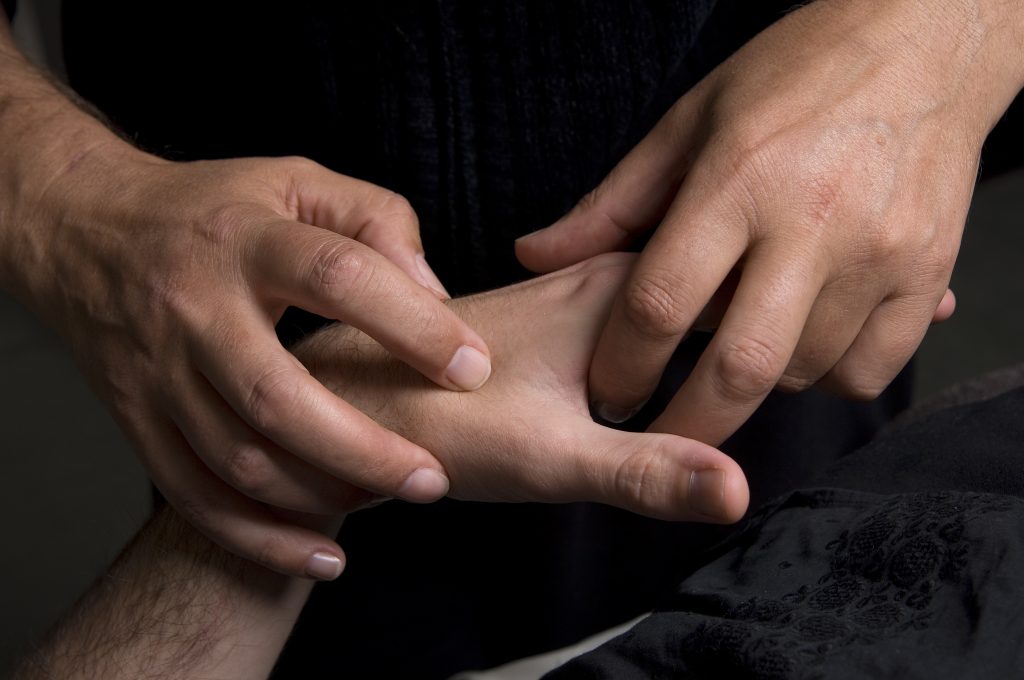
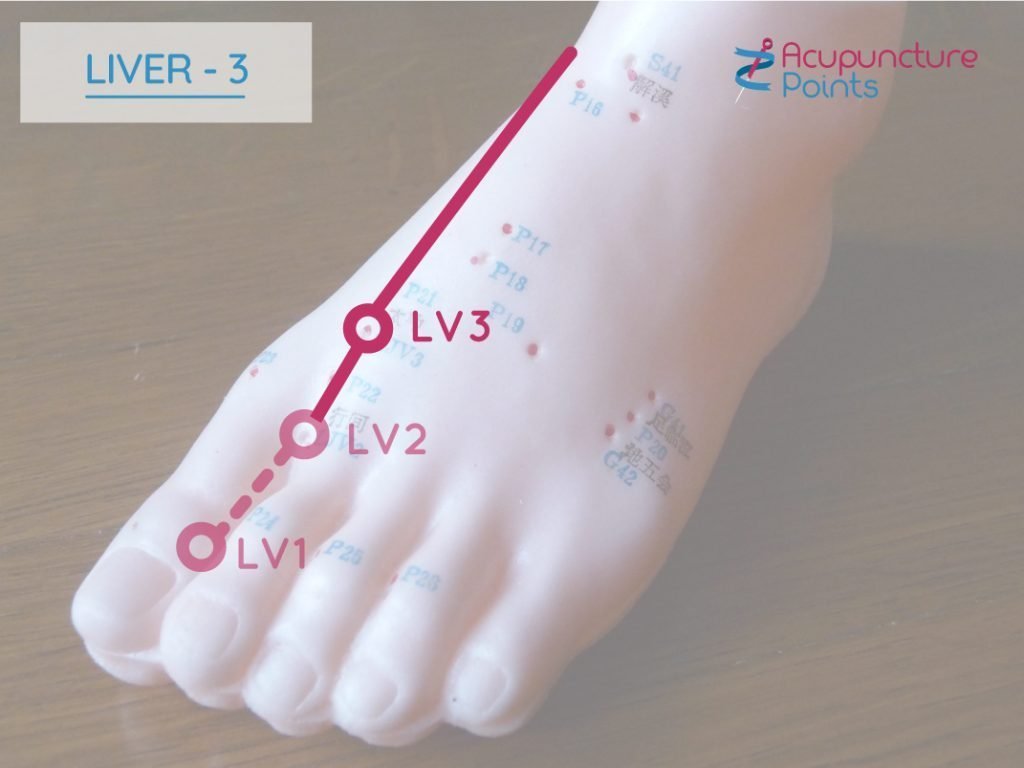
Finding better points or combinations of points depends on understanding how Qi stagnation is affecting the patient.
Over some thousands of years acupuncturists have learned what acupuncture points do, and what can be done with them. Many books have been written on this.
When you read an acupuncture textbook you’ll find points have many properties. Among these are the abilities to
Of course they also affect the area near the point and the acupuncture channel on which they lie. Some acupuncture points lie on, or affect, several channels at the same time.
By combining points you may be able to do more than either could on its own.
By diagnosing the patient’s condition you can decide what action to take to help. If there is Heat, you would use a point to clear Heat. Better still, if you recognise on which acupuncture channel(s) the Heat is being generated, you’d choose points on that channel to clear Heat.
But you could do something else: instead of, or as well as, using points to clear the Heat you could use yin-cooling or Blood-strengthening points. If the patient was typically yin or blood deficient, or lived so as to weaken these sides of his health, it might be more important to boost these yin energies to stabilise them than to dissipate Heat. In other words, you would strengthen yin to ‘control’ or ‘anchor’ yang.
Think of it like a hot bath, its water too hot to enter.

What to do? You could wait for it to cool down, and hasten this process by opening the window and letting it evaporate faster. Or you could pour in more cold water. Adding more cold water is the yin-strengthening approach, whereas opening the window and letting cool air in to remove the heat is the yang dissipating approach. Read our page on balancing yin and yang for more on this.
Just doing that might be all that was needed. They’d feel steadier and calmer and more able to cope with the stress.
If the stress causing qi stagnation came from pressure to perform up to imposed targets, then, from a knowledge of 5 Element theory, one would nearly always treat Wood.
If the underlying cause came from a question of control, self-control, hysteria, or getting ‘high’, probably you’d treat Fire.
But if it came from ongoing worries, or caring for others, or dietary problems or poor choices, then you’d treat Earth.
If it arose from inability to relate to position in the world, to let go of what’s gone, to stand back, but also to stand up for principles and standards: Metal.
If the underlying problem was to do with inherent genetic makeup, or the ability to relax, to allow time for the resting phase in life: Water.
So if someone gets qi stagnation from a broken relationship, one might consider Fire and Metal. Fire, because the personal integrity has been breached, Metal because of the changed relationship.

On the other hand, if someone cared for had died, perhaps the more pressing need would be to support Earth as well as Metal.
These range from insomnia to headaches to tension to bowel disorders to pain to breathing problems and circulatory disturbances – and so on!
The patient doesn’t realise the cause is Qi stagnation. Their problem is the insomnia or at least, that’s what they want to be fixed! They’re not interested in something you call ‘Qi stagnation’.
But to ‘fix’ the insomnia, you need to deal with the Qi Stagnation. That means – depending on the personality and receptiveness of the patient – some advice, counselling or ‘re-education’.
Another frequent problem that accompanies Qi Stagnation is deficiency of Stomach and Spleen. In fact, I think this deficiency makes qi stagnation – particularly Liver qi stagnation – more likely.
As already explained on this page of Qi Stagnation, the acupuncturist has various ways of doing this.
Every one of these is a big subject.
If an acupuncture treatment is used too often on a given patient, it may become less effective.

In any case, if the patient always wants more of the same, probably the acupuncturist should look deeper and explore a more diverse strategy.
That will certainly make him work harder, but he’ll enjoy his work more. Otherwise it becomes repetitive and the practitioner gets bored and resentful.
Taking the Four Gates, let’s examine the points used and see what other points might work, either instead or better, depending on the diagnosis.
The more you know about the points the more creative you can be.
Liver 3 strengthens Blood and Yin, so calms and steadies Heat and tension. Other points that do this include – each in a slightly different way or with a different emphasis:
Large Intestine 4 disperses Wind and Heat, helps to balance fluids and restore balance between inside and outside (which is why it is used for attack by external pathogenic factors, like a cold) and sends energy downwards.
Here are other points that do something similar, although each with a different emphasis.

In addition, there are many points on the scalp that affect the Mind and send energy downwards and a few on the feet that ground it or pull it down.
Then there are the names of the points. For Liver 3 (Taichong) one might choose points with the word ‘chong’ (passageway) in their name to strengthen the Blood.
For Large intestine 4, if the main aim was to clear Wind, then points with ‘feng’ (Wind) in their name might be chosen.
Some points affect particular parts of the body. If you know where a problem lies, adding the appropriate point may increase the effect of our treatment.
These Command points come down to us from antiquity. They do work, but sometimes by palpating the area, say the abdomen, I have searched for and found an even more effective point, which often lies along the same channel as the Command point for that area, but not where expected. In other words, the point I’ve used is perhaps on the thigh or more distal on the leg distal to Stomach 36.
Similarly, there are groups of points in the ears with similar qualities, also on the forehead and hands.
As you see, there are many ways of treating qi stagnation with acupuncture.
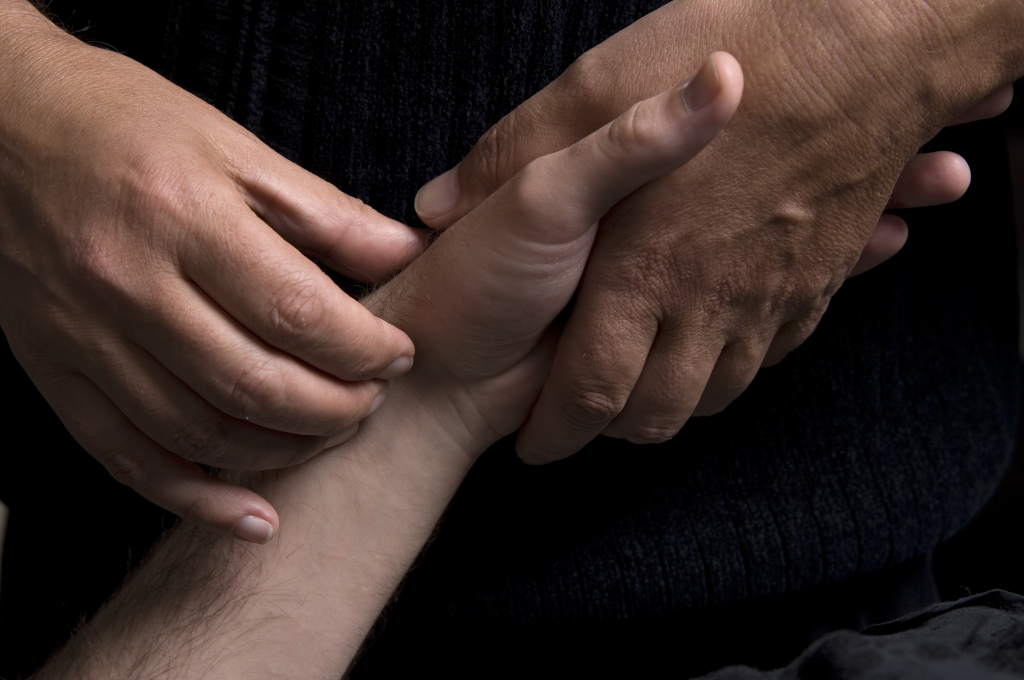
When I’m doing the acupuncture treatment, I take the patient’s pulse carefully before and usually during treatment, and keep an eye on their colour, demeanour and breathing, adjusting what I do as I go.
I also palpate the abdomen before and during treatment as this is also gives me great feedback.
This means it becomes an active participation between us, making me react as the treatment progresses. When I’m sure there has been as much change as I can expect, I leave the patient to rest and even doze if possible.
My preference, if I’ve made a good diagnosis, is to utilise 5 Element practice as much as possible. It’s economical and elegant and gives good results. However, it does require accurate diagnosis.
But – back to qi stagnation foods! – unless the patient makes an attempt to improve his or her diet, improvement, even from good acupuncture treatment, may be slow.

This Introductory Chinese medicine course introduces you to the amazing thinking behind this ancient medicine, now increasingly in demand.
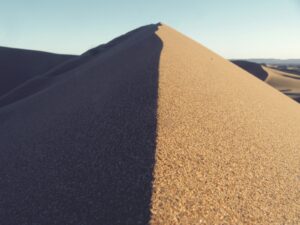
The Scottish College for Chinese medicine provides introductory courses for all, explaining Chinese medicine and its cultural background.

Master Tung’s acupuncture is a hidden treasure, lost to China but recovered in Taiwan from where it spread round the world.

Knee pain has five main causes. It’s certainly worth trying acupuncture before you resort to surgery!
Subscribe to the Newsletter
If you are interested in understanding how Traditional Chinese Medicine can improve your life sign up to my newsletter for the latest updates.
Subscribe to the Newsletter
If you are interested in understanding how Traditional Chinese Medicine can improve your life sign up to my newsletter for the latest updates.
4 Responses
Hello Jonathan,
I’m used to eating a lot of premium quality cold pressed extra virgin olive oil. Can this be bad for Qi stagnation?
By the way, thank you for this article, very helpful.
Thanks don-hi: the short answer is I don’t know. In some people almost anything can increase Qi stagnation and they just have to experiment.
Usually, ‘good’ fats help your body to release bile, which – in most people – is beneficial. But I suppose too much, even ‘good’, fat may be too heating, in which case, given an underlying propensity to qi stagnation, it might increase it.
Having read your excellent article I am certain I have Qi stagnation . I am underweight & eat a lot of protein including goats & sheeps yogurt & cheese. Are these bad for me.
I am now going to buy your books on Qi & Yin deficiency. I would love to come & see you but live in Bristol. Are you able to help people remotely by video etc. Many thanks. Evelyn
Yogurt and cheese are excellent foods according to Western nutritional advice but they tend to be cold and phlegm-forming from the viewpoint of Chinese nutritional experience. If your circulation is excellent (ie no signs of cold hands or feet, for example) then your body may be able to overcome the cold and not create phlegm. if otherwise, these foods would probably not be recommended, or only occasionally and when part of a meal with balancing qualities.
People consult me from all over the world. You can book via https://www.acupuncture-points.org/video-consultation.html. But nothing beats a good, local practitioner. And obviously I can’t take your pulses or palpate your hara etc, both often important in reaching a diagnosis. That said, having video consulted me, many people recommend their friends to do likewise.